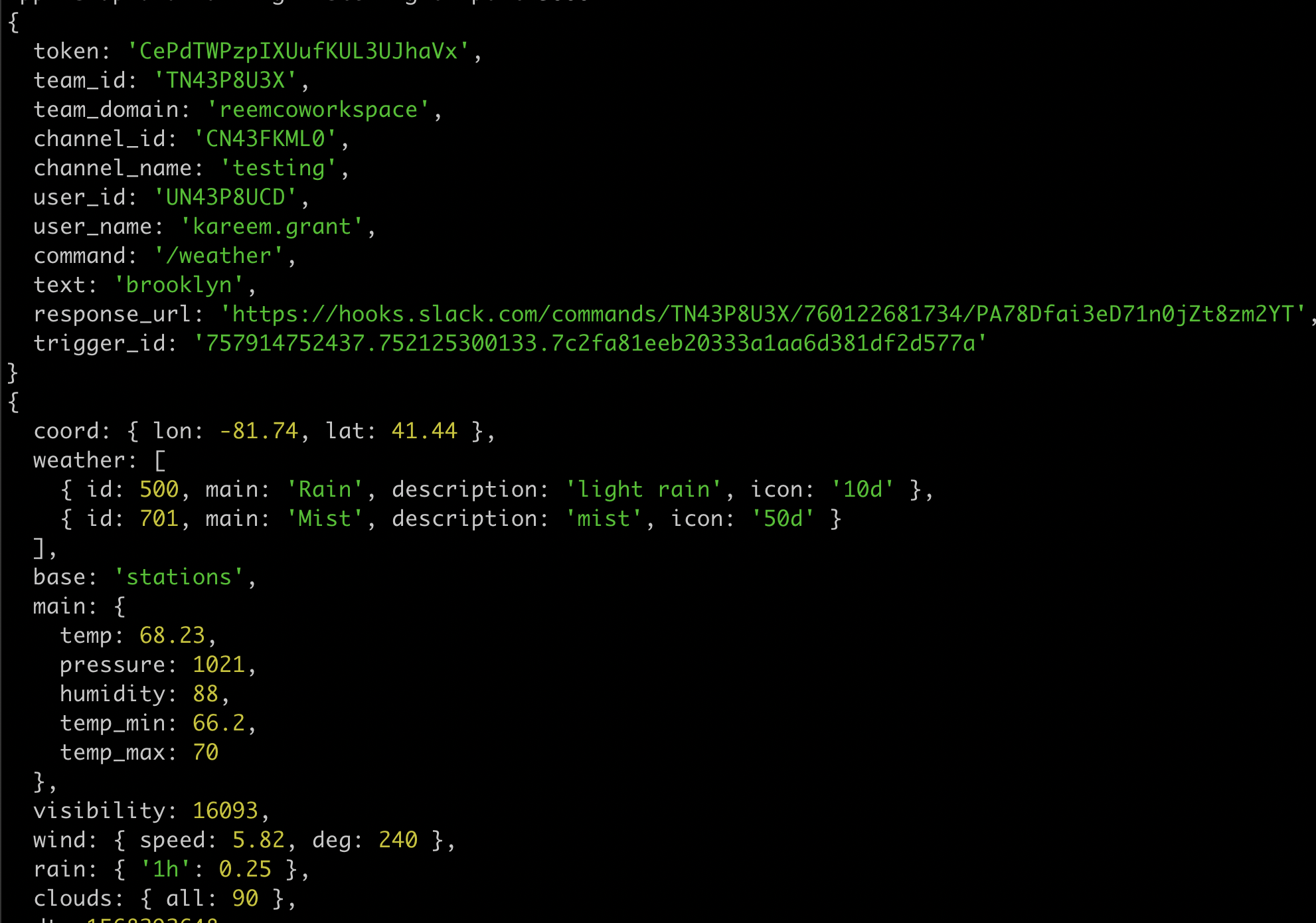Step 11: Make API Request to OpenWeather
Step 11: Make API Request to OpenWeather
Now it’s time to make an API request from our server to OpenWeather
1. Add the following code to the bottom of index.js
- Add the following code to the bottom of
index.jsand replace[YOUR_OPENWEATHER_API_KEY]with your api key from OpenWeather
async function openWeatherApi (query) {
try {
const url = 'https://api.openweathermap.org/data/2.5/weather'
const apiKey = '[YOUR_OPENWEATHER_API_KEY]'
// make api request using axios
const response = await axios.get(url, {
params: {
appid: apiKey,
q: query,
units: 'imperial'
}
})
console.log(response)
return response.data
} catch (e) {
console.log(e)
}
}
Here’s a summary of the code above:
We’re going to use async/await to handle our API request to OpenWeather so we’ve prepended
asyncin front ofopenWeatherApi()openWeatherApi()accepts aqueryparameter which will represent the city name received from slash commandaxios is being used to make a get request to the OpenWeather API
axios is a “promise-based” http client, which means it will return a promise after it’s done making the request
we are using
awaitto halt the execution of the rest of the code in the function until a response is received from OpenWeatherOnce the response is received, we are returning the
response.dataobject since axios always includes any payload (data information) in a key nameddataIf an error occurs, we are simply logging the error to the console for now
2. Update app.post(/weather...) in index.js
We are going to update the logic in our route handler app.post(/weather...) so it calls the openWeatherApi()
- Update the
app.post(/weather...)route handler to reflect the code below:
app.post('/weather', async (req, res) => {
try {
console.log(req.body)
// respond with an OK to sender within 3 secs
// as required by Slack for delayed responses
// documentation: https://api.slack.com/slash-commands#responding_response_url
res.json()
// extract city passed in as a parameter to
// our slash command (/weather cityName)
const query = req.body.text
// making API request via openWeatherApi function
const response = await openWeatherApi(query)
// print out OpenWeather API
// response to the console
console.log(response)
// res.json(data)
} catch (e) {
console.log(e)
}
3. Try your /weather slash command again
Restart your Express server and go back to your development workspace on Slack and try the /weather slash command again (make sure you include a valid city name):
/weather brooklynGo to your command line application and open the tab associated with your Express server
Confirm the data from our OpenWeather API request is now being displayed in our server log (via) - the output should look similar to the image below:

- Nice! We just made a successful API request to OpenWeather